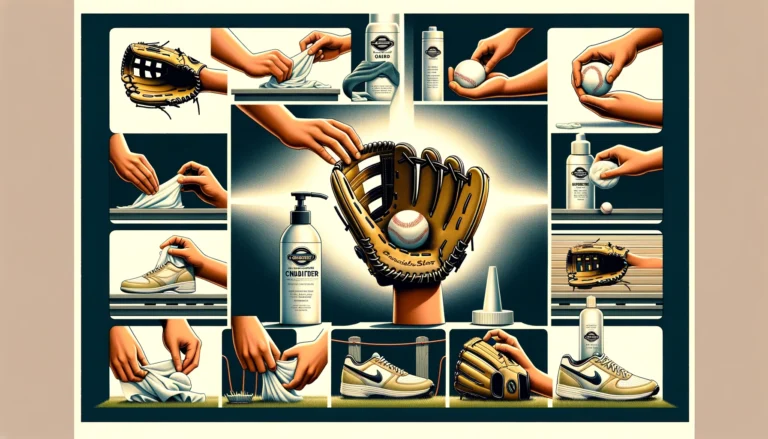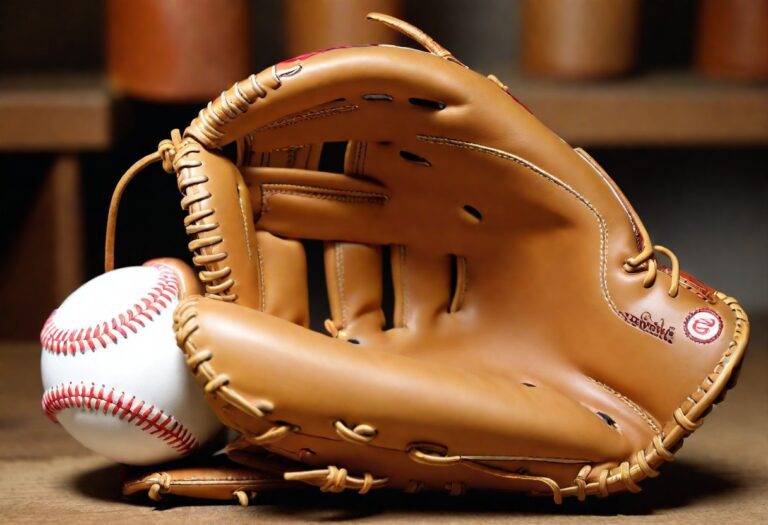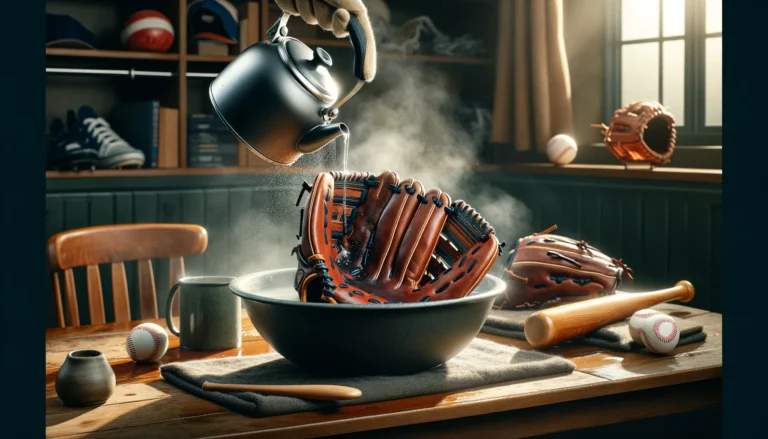How to Measure Your Hand for a Baseball Glove?
Finding the right baseball glove can feel tricky. You want a glove that feels like a natural extension of your hand, but with so many sizes and styles, how do you choose the perfect one?
The key lies in measuring your hand accurately. This simple process ensures your glove not only fits snugly your dominant hand but also improves your game by allowing better control and comfort.
In this guide, we’ll walk you through the steps to measure your hand for a baseball glove, ensuring you hit the field with confidence and a glove that feels just right.
Understanding Glove Sizing and Hand Measurement
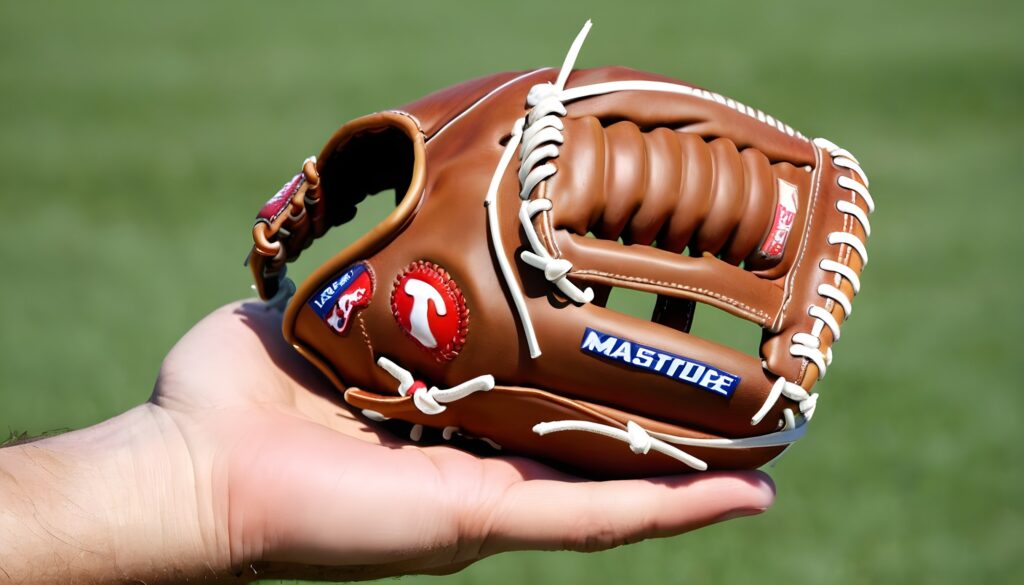
The Importance of Accurate Hand Measurement
Ensuring you have the correct size glove is crucial for both comfort and performance on the field.
Accurate hand measurement is the first step towards finding a glove that feels like an extension of your body, allowing for optimal control and movement.
To begin the measurement process, you will need a few simple tools:
- Pen/Pencil
- Paper
- Ruler or measuring tape
Once you have these items, follow these steps to measure your hand accurately:
- Lay the paper on a flat surface.
- Place your hand on the paper with your fingers spread and palm facing down.
- Use a pen or pencil to mark the tip of your middle finger and the bottom of your palm.
- Measure the distance between the two marks with the ruler or measuring tape to determine the length of your hand.
Remember, a snug fit is ideal, but the glove should not be so tight that it restricts movement. Conversely, a glove that is too loose can affect your grip and feel uncomfortable.
After measuring, consult the brand-specific sizing chart to find the glove size that corresponds to your hand measurements.
This step is essential as different brands may have slight variations in their sizing.
Step-by-Step Guide to Measuring Your Hand
To ensure a perfect fit for your baseball glove, accurate hand measurement is crucial. Begin by gathering a pen or pencil, a piece of paper, and a ruler or measuring tape measure.
Follow these steps to measure your hand correctly:
- Step 1: Place your hand flat on the paper, spreading your fingers apart naturally.
- Step 2: Use the pen or pencil to mark the tip of your middle finger and the bottom of your palm.
- Step 3: Measure the distance between the two marks with the ruler or measuring tape to find the length of your hand.
- Step 4: To measure hand width, wrap the measuring tape around your hand just below the knuckles, excluding the thumb, and record the measurement.
Once you have your hand measurements, compare them to the brand-specific sizing charts to determine the appropriate glove size.
Remember, a snug fit is ideal, but the glove should not be so tight that it restricts movement or so loose that it affects your grip.
Interpreting Brand-Specific Sizing Charts
Once you’ve measured your hand, the next step is to consult brand-specific sizing charts to find the perfect baseball glove size for.
Each brand may have its own unique sizing standards, so it’s crucial to compare your measurements with each brand’s chart.
For example, a snippet from Hibbett’s guide suggests that using their size chart can ensure a fit that is tailored not only to your hand size but also to your specific position on the field.
Here’s a simplified example of how to interpret a sizing chart:
Hand Size (inches)Glove Size (Youth)Glove Size (Adult)6 – 6.5SmallN/A6.5 – 7MediumSmall7 – 7.5LargeMedium7.5+N/ALarge
Remember, the fit of your glove can affect your performance, so take the time to ensure you’re selecting the right size.
If you’re between sizes, consider how you prefer your glove to fit—tighter for more control or looser for flexibility—and choose accordingly.
Read Also: What Size Baseball Glove for a 6 Year Old
Selecting the Right Glove for Your Position
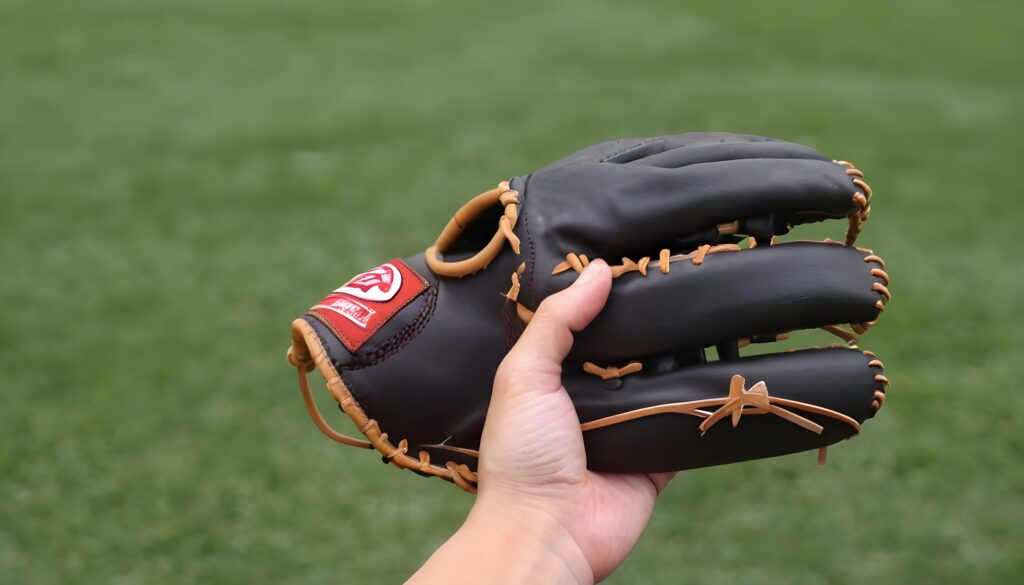
Differences in Gloves for Various Baseball Positions
Baseball gloves are not one-size-fits-all; they vary significantly depending on the position you play.
Infielders typically prefer smaller gloves for quick ball transfer, while outfielders need larger gloves with deeper pockets to catch fly balls.
Catchers and first basemen use mitts, which are distinct from gloves in that they have extra padding and no individual index finger or stalls.
Here’s a quick breakdown of glove sizes by position:
- Infielders: 11″ – 11.75″
- Outfielders: 12″ – 12.75″
- Catchers: 32.5″ – 34.5″
- First Basemen: 12″ – 13″
Choosing the right glove or catcher’s mitts is crucial for performance. A glove that fits well will not only improve your game but also ensure comfort throughout play.
Remember, the distinction between gloves and mitts is fairly straightforward, but selecting the correct type for your position is essential.
How Your Playing Position Influences Glove Size
The glove size you need is heavily influenced by the position you play on the field. Infielders typically prefer smaller gloves for quick ball transfer, while outfielders often opt for larger gloves to maximize their reach.
Pitchers may choose gloves with closed webbing to hide the ball from batters. Catchers use the largest mitts with extra padding to handle the high velocity of pitches.
Here’s a quick reference for typical glove sizes by position:
- Infield: 11″ – 11.75″
- Outfield: 12″ – 12.75″
- Pitcher: 11.5″ – 12″
- Catcher: 32.5″ – 34.5″
Remember, these sizes are just starting points. Personal preference and comfort should also guide your final decision.
It’s also beneficial to consider expert advice and factors like fit and type when selecting baseball cleats, as these can impact your overall performance and comfort on the field.
Position-Specific Features to Look For
When selecting a baseball glove, it’s crucial to consider the unique demands of your position on the field.
Infielders, for example, typically prefer smaller gloves with shallow pockets for quick ball retrieval and transfer.
Outfielders, on the other hand, often opt for larger gloves with deeper pockets to aid in catching fly balls.
For catchers, a mitt with extra padding is essential to handle the high velocity of pitches, while first basemen use a longer mitt to scoop up ground balls.
Pitchers may choose gloves with closed webbing to conceal their grip from batters. It’s important to note that while batting gloves are not position-specific, they are worn by batters regardless of their position.
Here’s a quick reference for position-specific glove features:
- Infielders: Smaller size, shallow pocket
- Outfielders: Larger size, deeper pocket
- Catchers: Extra padding, durable
- First Basemen: Longer mitt, curved edge
- Pitchers: Closed webbing, comfortable fit
Read Also: What is the Best Baseball Glove Brand
The Role of Comfort and Material in Glove Selection
Why Comfort Should Be a Priority in Your Choice
When selecting a baseball glove, comfort is not just a luxury; it’s a necessity for peak performance.
A glove that doesn’t fit your glove properly or comfortably can distract you from the game and even affect your fielding ability.
It’s essential to find a glove that feels like an extension of your hand, providing a secure fit without any pinching or slipping.
Comfort also plays a significant role in preventing blisters and calluses, which can be a common issue with ill-fitting gloves.
Below is a list of reasons why prioritizing comfort is crucial:
- Ensures a better feel and connection with the ball
- Reduces the risk of hand fatigue during long games
- Helps maintain focus by eliminating discomfort
- Aids in the prevention of hand injuries
Remember, a glove that offers superior comfort will not only improve your fielding performance but also enhance your overall experience on the field.
Make sure to try on different gloves and assess their comfort level before making a decision.
Leather vs. Synthetic: Pros and Cons
When selecting a baseball glove, the choice between leather and synthetic materials is crucial.
Leather gloves are renowned for their soft feel and precise fit, often preferred by professionals for the tactile feedback they provide. However, they come with a higher price tag and may not endure as long as their synthetic counterparts.
Synthetic gloves, on the other hand, excel in durability and weather resistance. They are a cost-effective option that performs well, especially in wet conditions, but may sacrifice some of the comfort and fit associated with leather gloves.
Here’s a quick comparison:
- Leather Gloves:
- Superior feel and fit
- Higher cost
- Less durable in wet conditions
- Synthetic Gloves:
- More durable
- Better in wet conditions
- More affordable
Ultimately, the choice depends on personal preference, playing conditions, and budget considerations.
Ensuring a Snug Fit Without Restricting Movement
Finding the balance between a snug fit and freedom of movement is essential for any baseball glove.
A glove that fits well will enhance your performance, ensuring that you have the necessary control and comfort.
It’s important to remember that while a glove should be tight enough to feel like a second skin, it must not be so tight that it hinders your hand’s natural movements.
When trying on gloves, consider the following points:
- The glove should conform to your hand without excess material in the palm or fingers.
- Look for adjustable features, such as wrist closures, that allow for a personalized fit.
- Materials like Lycra or spandex incorporated into the design can offer additional flexibility.
Always remember that a new glove will typically stretch slightly with use, so a snug fit initially is preferable to a loose one that may become too baggy over time.
Read Also: Where are Wilson Baseball Gloves Made
Trying On Gloves: What to Look For
Assessing the Fit: Tips and Tricks
When trying on baseball gloves, it’s essential to find the right balance between a snug fit and the ability to move your hand freely.
A glove that’s too tight may hinder your performance, while one that’s too loose can affect your grip and control.
Here are some tips to help you assess the fit:
- Check the length of the glove by aligning the base of your palm with the base of the glove. Your fingertips should reach close to the end of the glove’s fingers without pressing against them.
- Test the wrist adjustment to ensure it’s neither too tight nor too loose. It should allow for a full range of motion while keeping the glove securely in place.
- Flex your hand inside the glove to simulate catching motions. Pay attention to any areas that pinch or feel uncomfortable.
Remember, the feel of the glove is just as important as the size. Spend time trying on different gloves and flexing your hand to find the one that feels like an extension of your body. This will ensure not only comfort but also maximum performance on the field.
The Feel Test: Holding a Club with the Glove On
When conducting the feel test, it’s crucial to pay attention to how the glove’s index finger interacts with the club.
A proper fit will ensure a secure grip without any slippage, which can significantly affect your swing and overall performance.
Here are some key points to consider during the feel test:
- The glove should allow for a natural and comfortable hand position.
- There should be no excess material at the fingertips or palm area.
- The closure should fasten snugly without needing to stretch or leave loose Velcro.
Remember, a new glove might feel slightly restrictive at first, but it will adapt to your hand’s shape after a short period of use. If the glove is too tight or too loose, it can lead to discomfort and a compromised grip.
After trying on the glove, practice holding and swinging the club to ensure that the fit is correct and that there are no distractions from an ill-fitting glove.
Adjusting for the Perfect Grip
Once you’ve found a glove that seems to fit well, the next step is to adjust it for the perfect grip. A proper grip is essential for control and precision in your swing.
Begin by placing your hand inside the glove and fastening it securely. The glove should feel snug but not overly tight, allowing for flexibility and movement without excess material bunching up.
Here are some tips to ensure you have the right fit:
- The glove should cover your hand without any part of your palm exposed.
- When you make a fist, there should be no extra material at the top of your fingers.
- The fastening tab should reach across to the Velcro without completely covering it.
If you find that the glove is too tight or too loose in certain areas, don’t hesitate to try a different size or brand.
Remember, the right glove will feel like a second skin and will not distract you during your game.
Maintaining Your Glove for Longevity
Proper Glove Care and Storage
To maintain the performance and longevity of the leather strip of your baseball glove, proper care and storage are essential.
Regular cleaning is crucial; after each use, wipe down your glove with a damp cloth to remove dirt and sweat. This prevents the buildup of grime that can degrade the leather over time.
For a deeper clean, use a leather conditioner that’s appropriate for baseball gloves to keep the leather supple and prevent cracking.
When storing your glove, avoid high heat and moisture, which can warp the leather and affect the glove’s shape.
Instead, store it in a cool, dry place and consider placing a ball in the tip of the index and pocket to help the glove maintain its form. Additionally, always fully dry your glove before storage if it becomes wet during play.
Here’s a simple checklist for glove care:
- Wipe with a damp cloth after use
- Apply leather conditioner periodically
- Store in a cool, dry place
- Keep a ball in the pocket for shape
- Dry thoroughly if wet
When to Replace Your Baseball Glove
Recognizing when to replace your baseball glove is essential for maintaining optimal performance throughout various seasons. A baseball glove sizing and’s lifespan can vary, but there are clear indicators that signal it’s time for a new one.
Firstly, check for any cracking or tears at the seams. A shiny and worn appearance, especially in leather gloves, suggests the glove has reached the end of its life.
Moisture and sweat can hasten the deterioration, so it’s crucial to monitor your glove’s condition after each use.
Here’s a quick checklist to help you decide if it’s time to replace your glove:
- Visible signs of wear, such as cracking or tears
- The glove has become shiny and looks dirty
- Loss of comfort and a snug fit
- Decreased grip and control during play
Proper cleaning and storage are crucial aspects of glove care, ensuring your glove remains in good condition for as long as possible. However, once these signs of wear become apparent, consider investing in a new glove to ensure your game remains at its best.
Tips for Breaking In a New Glove
Breaking in a new baseball glove is a critical step to ensure it conforms to the unique contours of your hand, providing both comfort and control.
Start by working the leather to soften it, using a combination of glove conditioner and manual manipulation.
Focus on the areas that will bend the most during play, such as the thumb and pinky finger areas, and the pocket where the ball will rest.
Next, use a mallet or a similar tool to simulate the impact of a baseball. This helps create a well-defined pocket and improves the glove’s readiness for game situations. Remember to be gentle to avoid damaging the leather.
Finally, the best way to break a glove is simply to use it. Play catch regularly, and use the glove in practice sessions as much as possible.
Over time, the glove will mold to your hand and become an extension of your body, enhancing your ability to master the art of holding a baseball bat for optimal control and power transfer.
Read Also: Can You Put a Baseball Glove in the Dryer
Conclusion
Finding the perfect baseball glove fit is essential for comfort, control, and enhancing your overall performance on the field.
As we’ve explored in this guide, measuring your hand accurately and consulting brand-specific sizing charts are crucial steps in selecting the right glove.
Remember to prioritize a snug fit that allows for flexibility without being too tight or too loose.
Trying on gloves in-store is highly recommended to ensure the best feel and fit. With the right glove in hand, you’re set to play your best game with confidence and precision.
Frequently Asked Questions
How do I ensure I’m choosing the right size baseball glove?
To ensure the right size, measure your hand and refer to the brand’s specific sizing chart. A proper fit will feel snug but not overly tight to avoid restricting movement. It’s also recommended to try on gloves in a retail store or pro shop to find the best fit for your hand.
Why is it important to have a glove that fits well?
A well-fitting glove is crucial for comfort and effectiveness on the field. It should provide a secure grip and allow for a full range of motion. A glove that’s too tight can restrict movement, while one that’s too loose can be uncomfortable and affect your performance.
What are the differences between leather and synthetic baseball gloves?
Leather gloves typically offer better durability and fit, conforming to your hand over time. Synthetic gloves are lighter and may be less expensive, but they generally don’t last as long as leather gloves. The choice between materials depends on personal preference and playing frequency.
How can I tell if a baseball glove fits properly when trying it on?
A properly fitting glove will feel secure on your hand without any excess material to pinch at the palm or fingers. Check that the fastening tab doesn’t cover all the Velcro, as this could indicate the glove is too big. The glove should also allow for comfortable movement when holding and manipulating a baseball.
When should I replace my baseball glove?
Replace your baseball glove when it shows significant wear, such as softening of the leather, or tears, or when it no longer maintains its shape and snug fit. Regular maintenance can extend the life of your glove, but if it starts to compromise your game, it’s time for a new one.
What should I consider when breaking in a new baseball glove?
When breaking in a new baseball glove, focus on creating a deep pocket, where the ball will rest. Use glove conditioners to soften the leather, play catch regularly to shape the glove, and consider using a glove mallet to mimic the impact of a baseball. Store the glove with a ball in the pocket and wrapped with a band to maintain shape.


